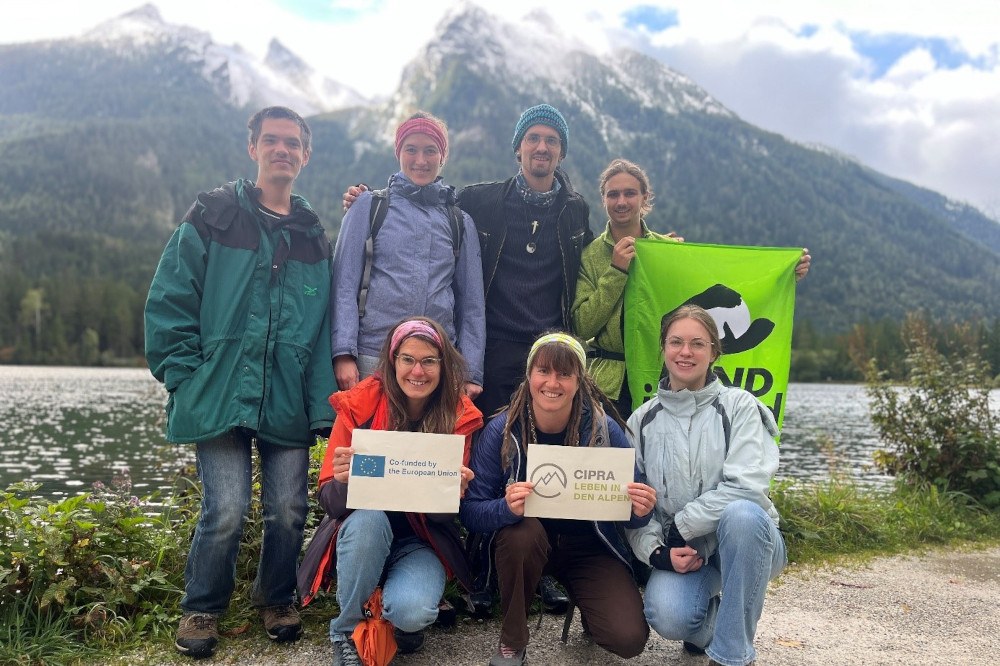Never again: Racism in nature conservation

While nature and environmental protection are commonly associated with young, liberal, and left-wing movements, extreme right-wing groups also engage in these causes, opposing things like genetic engineering and nuclear energy. These right-wing groups often participate in protests against free trade agreements and industrial agriculture, blurring the lines between political ideologies. The connection between nature and far right politics is also not a new development: Between 1933 and 1945, the Berchtesgadener Alps in the south of Germany were a National Socialist centre of power: Adolf Hitler spent over a quarter of his time in office here. In his Berghof, the dictator decided on persecution, war and genocide in a circle of close confidants. At the same time, the Alps were the backdrop for Hitler's staging as the supposedly likeable ‘People's Chancellor’. This illusion was disseminated millions of times in photographs and films and continues to have an impact to this day. The idyllic landscape of the Berchtesgadener Alps is closely linked to the horrors of Nazi rule.
However, a deeper analysis reveals significant differences in their motivations. Right-wing environmentalism is tied to racist, nationalist, and biologically deterministic ideas, such as "ethnopluralism" and "repopulation," which focus on the protection of national borders, ancestral lands, and often support ideas like remigration and societal "purification." Thus, while some goals overlap, the underlying reasons for pursuing them are vastly different across political ideologies.
It is important to make biologistic and racist continuities in nature conservation and environmental protection visible. Right-wing extremist and inhuman ideologies have to be identified as much as and thought patterns in nature conservation and environmental protection and develops human-affirming and democracy-promoting counter-designs. (FARN)
The Nazis used nature conservation for propaganda and self-interest to make themselves look good, but caused far more destruction through war, with their promises easily revoked by wartime laws, revealing their double standards, explains Tobias (23). “We don’t want history to repeat itself”, says Nicole (29). “It would be a shame for right-wing extremists under the guise of protecting nature to secure themselves resources and use them for their agenda versus actually protecting the environment.” According to her, this is especially important in the Alps because of their unique biodiversity. Sophie (32), hopes that in the future, nobody will have to deal with these questions anymore: “Because the extreme right is no longer relevant here”.
Sources and links:
Interviews Utopia-Excursion in September 2024: "The cloak of homeland security: what is right-wing nature conservation - and what is the problem?" (“Deckmantel Heimatschutz: Was ist rechter Naturschutz – und was das Problem?”)
www.nf-farn.de/farn (de), https://obersalzberg.de/ausstellungen/dauerausstellung/ (de)
Profile
What: Nationalist instrumentalization of nature protection in history and today
Who: Everybody
Where: Berchtesgaden and the area of Obersalzberg, Germany
When: 1933-1945
How: Between 1933 and 1945, Obersalzberg served as a key center of Nazi power, where Hitler made decisions about persecution, war, and genocide. It also became a propaganda site, a carefully crafted image that still lingers today despite its association with the horrors of Nazi rule.
Transferability: Although nature and environmental protection are today often associated with liberal values, right-wing groups also engage in these causes, blurring political lines. However, their environmentalism is rooted in racist and nationalist ideologies, making it important to expose these harmful connections and promote inclusive, democracy-supporting alternatives. In many places of the Alps, the horrors of nationalist and fascist regimes are still visible today, e.g. along the frontlines from first and second world war.
